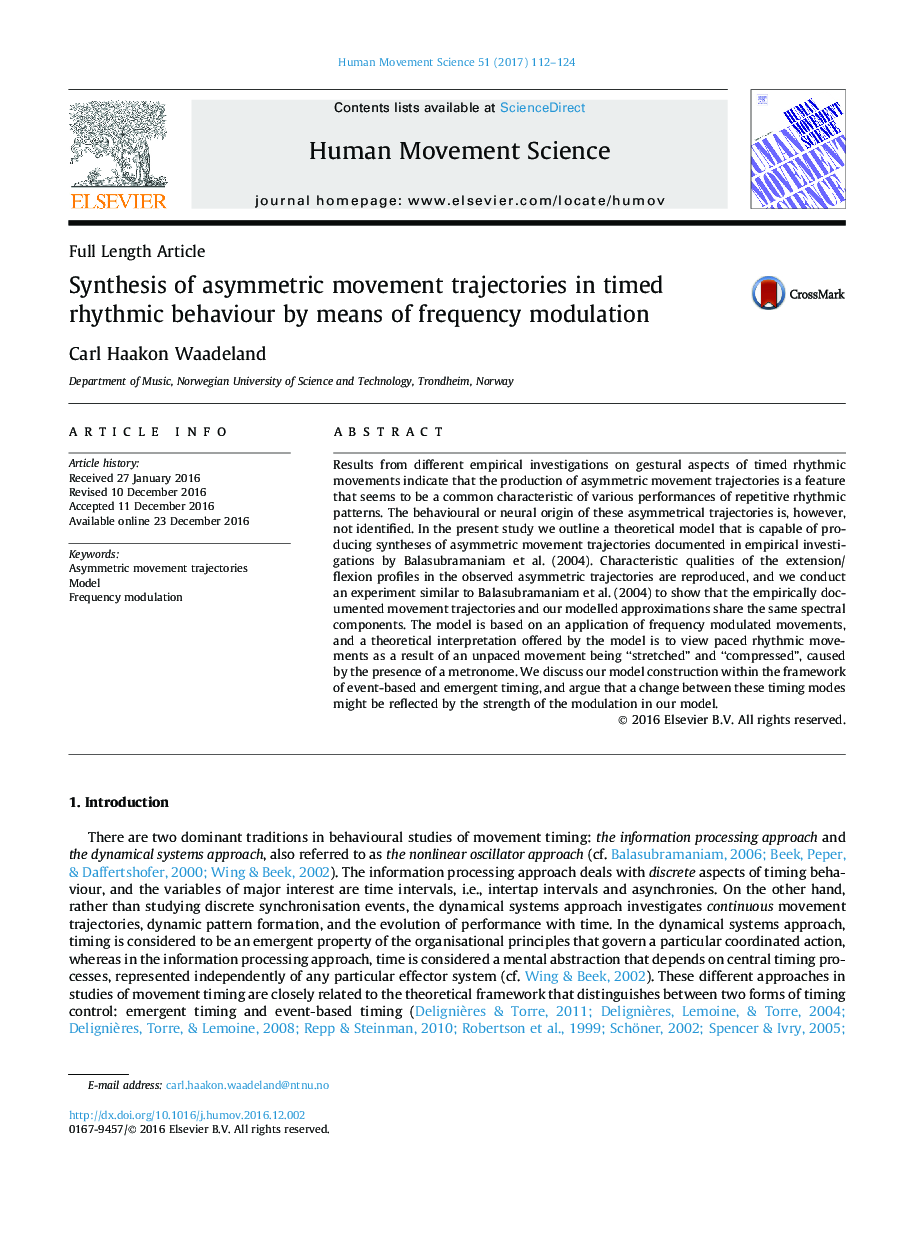| کد مقاله | کد نشریه | سال انتشار | مقاله انگلیسی | نسخه تمام متن |
|---|---|---|---|---|
| 5042027 | 1474214 | 2017 | 13 صفحه PDF | دانلود رایگان |
- A model producing syntheses of asymmetric movement trajectories is presented.
- The model is based on an application of frequency modulated movements.
- The movement trajectories and the modelled approximations have similar spectra.
- The model is discussed within the framework of event-based and emergent timing.
Results from different empirical investigations on gestural aspects of timed rhythmic movements indicate that the production of asymmetric movement trajectories is a feature that seems to be a common characteristic of various performances of repetitive rhythmic patterns. The behavioural or neural origin of these asymmetrical trajectories is, however, not identified. In the present study we outline a theoretical model that is capable of producing syntheses of asymmetric movement trajectories documented in empirical investigations by Balasubramaniam et al. (2004). Characteristic qualities of the extension/flexion profiles in the observed asymmetric trajectories are reproduced, and we conduct an experiment similar to Balasubramaniam et al. (2004) to show that the empirically documented movement trajectories and our modelled approximations share the same spectral components. The model is based on an application of frequency modulated movements, and a theoretical interpretation offered by the model is to view paced rhythmic movements as a result of an unpaced movement being “stretched” and “compressed”, caused by the presence of a metronome. We discuss our model construction within the framework of event-based and emergent timing, and argue that a change between these timing modes might be reflected by the strength of the modulation in our model.
Journal: Human Movement Science - Volume 51, January 2017, Pages 112-124
